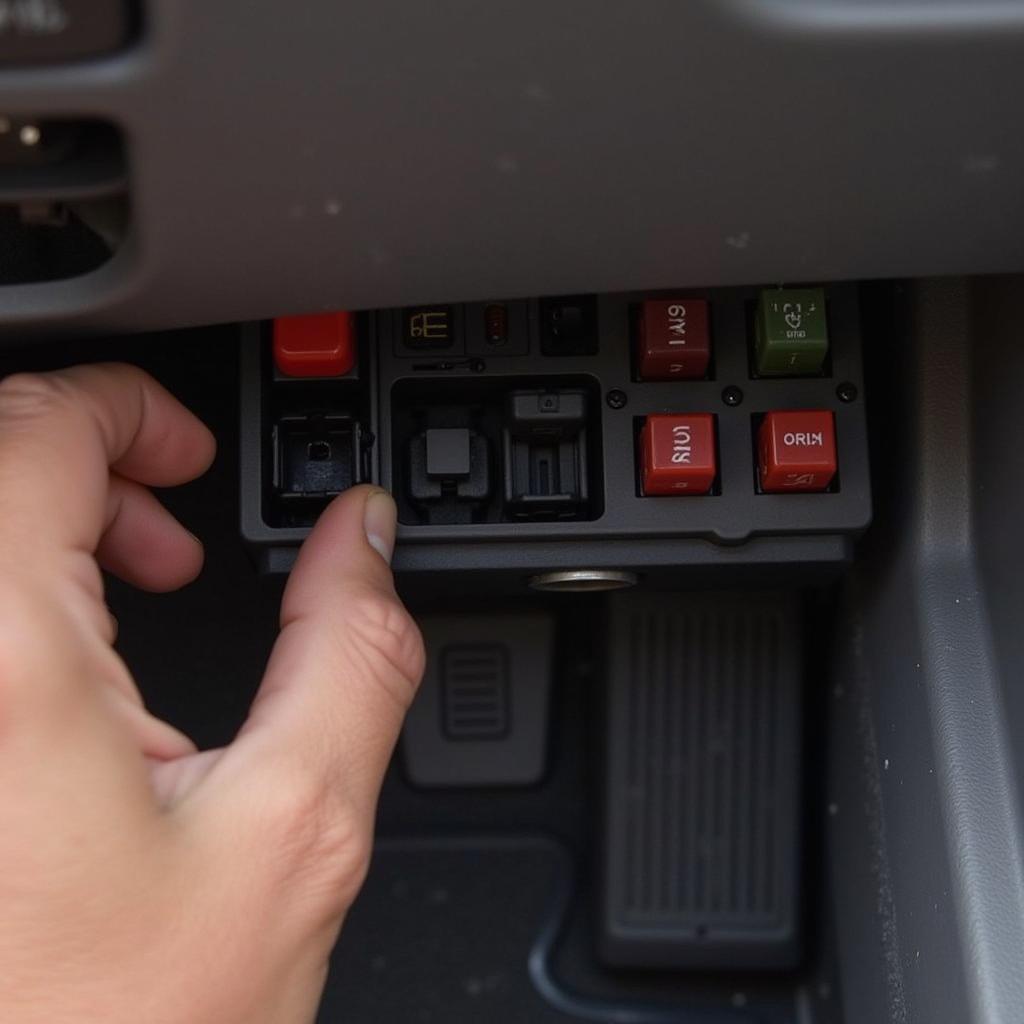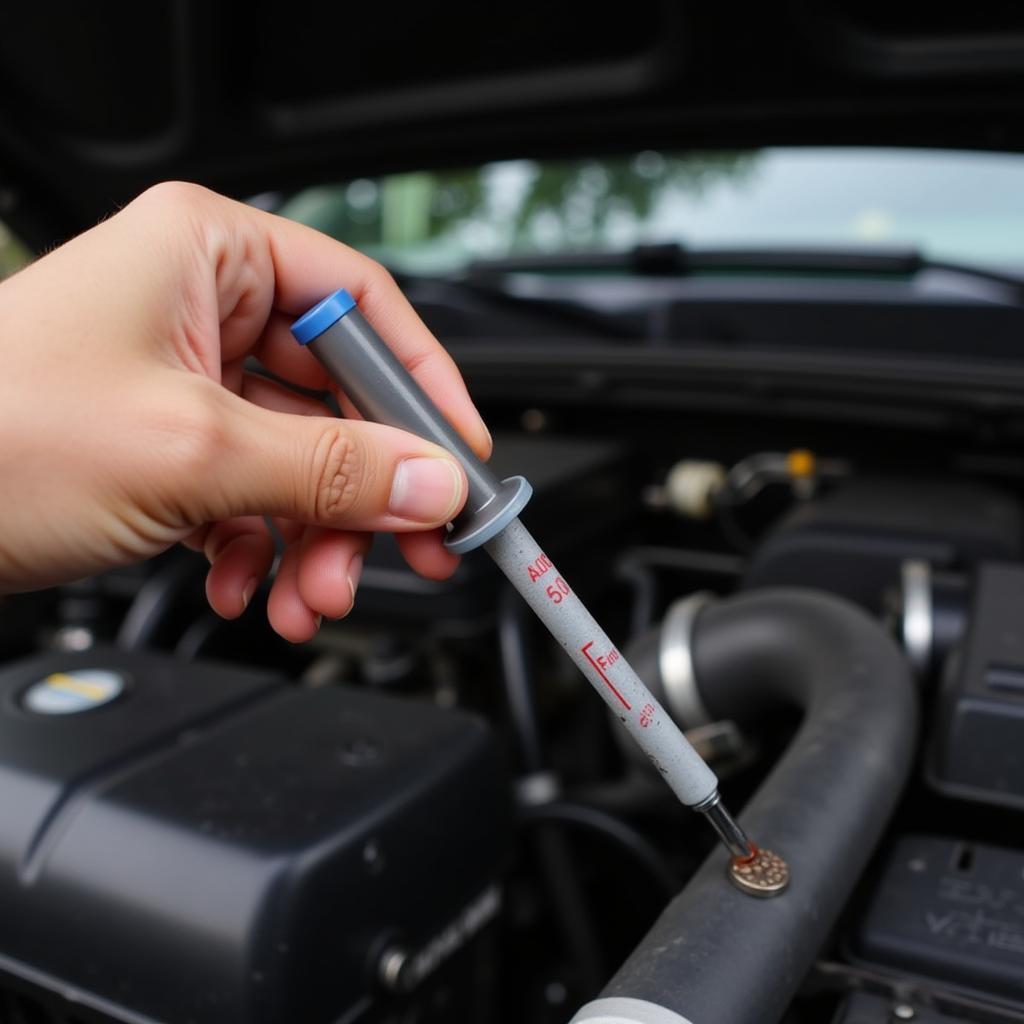Tail lights are essential for safety, ensuring visibility in low-light conditions and signaling your intentions to other drivers. A malfunctioning tail lamp can lead to accidents and traffic violations. Knowing How To Fix A Tail Lamp Car yourself can save you time and money. This guide provides a comprehensive walkthrough of troubleshooting and repairing your car’s tail lights.
Common Causes of Tail Lamp Problems
Several issues can cause tail lamp failure. Before you start taking things apart, it’s crucial to diagnose the problem accurately. Here are some of the most common culprits:
- Burnt-out Bulb: This is the most frequent cause and thankfully the easiest to fix. Like any light bulb, tail light bulbs have a limited lifespan.
- Damaged Wiring: Exposed or frayed wires can cause a short circuit, preventing the tail light from working. Rodents chewing on wires is a surprisingly common problem.
- Corrosion: Over time, the metal components in the tail light assembly can corrode, disrupting the electrical connection.
- Blown Fuse: A blown fuse in the tail light circuit will cut off power to the entire system.
- Cracked Lens: A cracked or broken lens not only affects the light’s effectiveness but also exposes the bulb to the elements, accelerating corrosion.
If you’re looking for ways to fund your car repair, check out resources on how to get money to fix my car.
Diagnosing the Issue
Before you begin, ensure your car is parked on a level surface and the parking brake is engaged. Here’s a step-by-step guide to pinpoint the problem:
- Check the Bulb: Turn on your headlights and hazard lights. Have someone visually inspect the tail lights while you operate the turn signals. If the bulb isn’t lighting up, it’s likely burnt out.
- Inspect the Wiring: If the bulb appears intact, examine the wiring leading to the tail light assembly. Look for any signs of damage, such as fraying, cuts, or loose connections.
- Check the Fuse Box: Locate your car’s fuse box (usually under the dashboard or in the engine compartment) and consult your owner’s manual to identify the tail light fuse. A blown fuse will have a broken filament.
 Checking the tail light fuse in a car
Checking the tail light fuse in a car
How to Replace a Tail Light Bulb
Replacing a tail light bulb is usually a straightforward process:
- Access the Tail Light Assembly: Consult your owner’s manual for specific instructions on accessing the tail light assembly. This may involve removing screws or clips.
- Remove the Bulb: Carefully twist and pull out the old bulb. Some bulbs may have a locking mechanism you’ll need to release.
- Install the New Bulb: Insert the new bulb and twist it into place. Ensure it’s securely seated.
- Test the Light: Turn on your lights to verify that the new bulb is working correctly.
If you are on a fixed income and need a car loan, explore options for car loans on a fixed income.
Dealing with Wiring and Fuse Issues
Wiring repairs can be more complex and may require professional assistance. If you’re comfortable working with electrical systems, you can attempt to repair damaged wires using electrical tape or butt connectors. Replacing a blown fuse is simple; remove the old fuse and insert a new one with the same amperage rating. However, if fuses blow repeatedly, it indicates a more serious underlying electrical problem that requires professional diagnosis.
What if I Can’t Afford to Fix My Car?
Car repairs can be expensive. If you’re struggling to afford the repairs, consider options such as finding low-cost mechanics, negotiating payment plans, or exploring resources for how can i get my car fixed for free. If your car payment is a burden, perhaps a fixed payment calculator car could help you manage your budget. Perhaps you’re wondering, “I can’t afford to fix my car, what are my options?” There are several resources available to help.
Conclusion
Knowing how to fix a tail lamp car can be a valuable skill. While simple issues like burnt-out bulbs are easy to address, more complex problems involving wiring or fuses might require professional help. Regular maintenance and prompt attention to tail light problems can ensure your safety on the road. For further assistance or if you’re unsure about any step, feel free to contact us at AutoTipPro at +1 (641) 206-8880 or visit our office at 500 N St Mary’s St, San Antonio, TX 78205, United States.
FAQs
- How often should I replace my tail light bulbs? While there’s no set schedule, it’s a good idea to check them every six months or so.
- Can I use any type of bulb for my tail lights? No, always use the correct bulb type specified in your owner’s manual.
- What does it mean if my tail lights flicker? Flickering tail lights can indicate a loose connection, a faulty bulb, or a problem with the wiring.
- Why is one tail light working but not the other? This typically points to a burnt-out bulb on the non-working side.
- Is it illegal to drive with a broken tail light? Yes, driving with a broken tail light is a traffic violation in most jurisdictions.
- How much does it cost to replace a tail light assembly? The cost varies depending on the make and model of your car but can range from $50 to $200 or more.
- Can I replace a tail light lens without replacing the entire assembly? Sometimes, yes. It depends on the design of your tail light assembly.






Leave a Reply